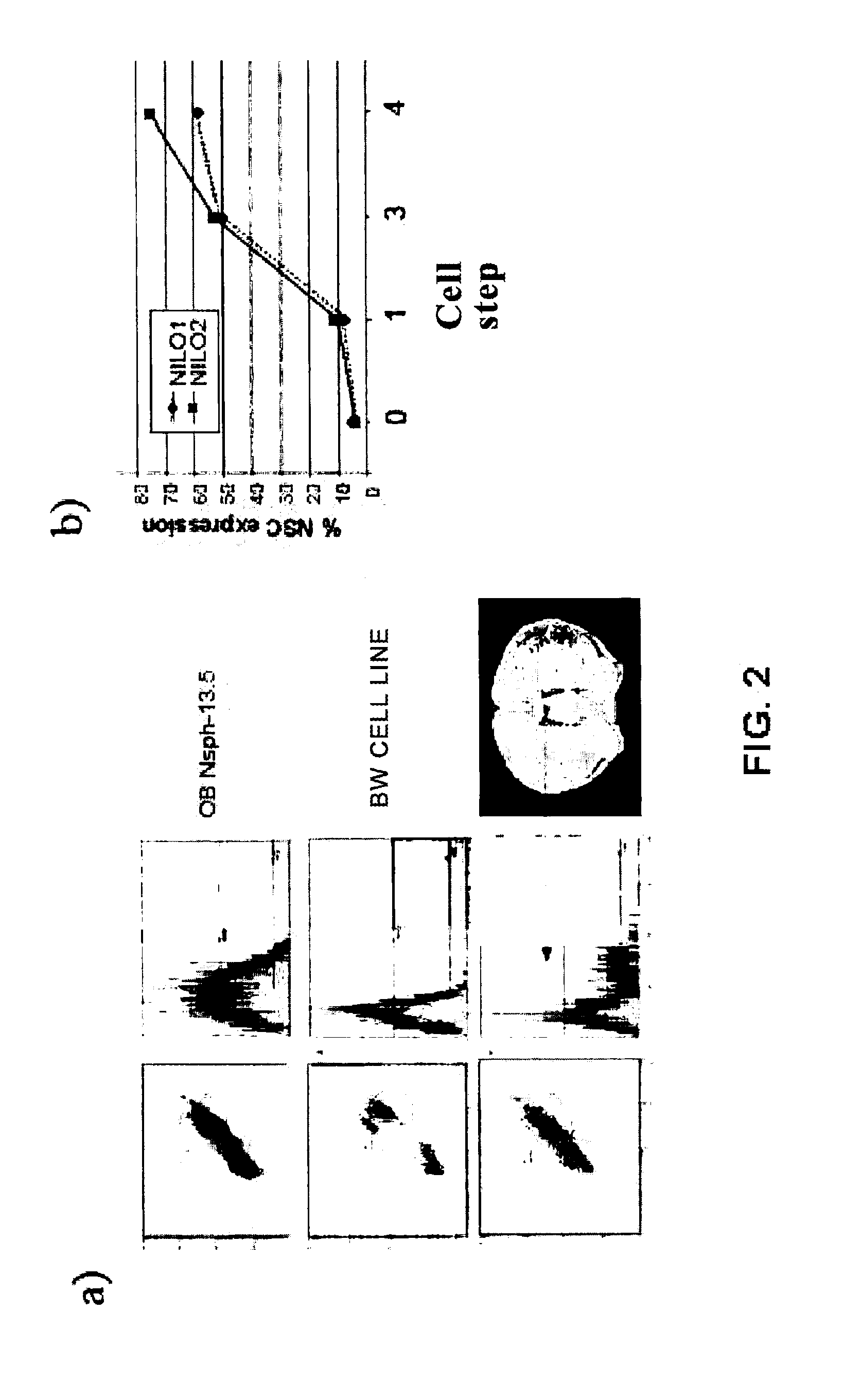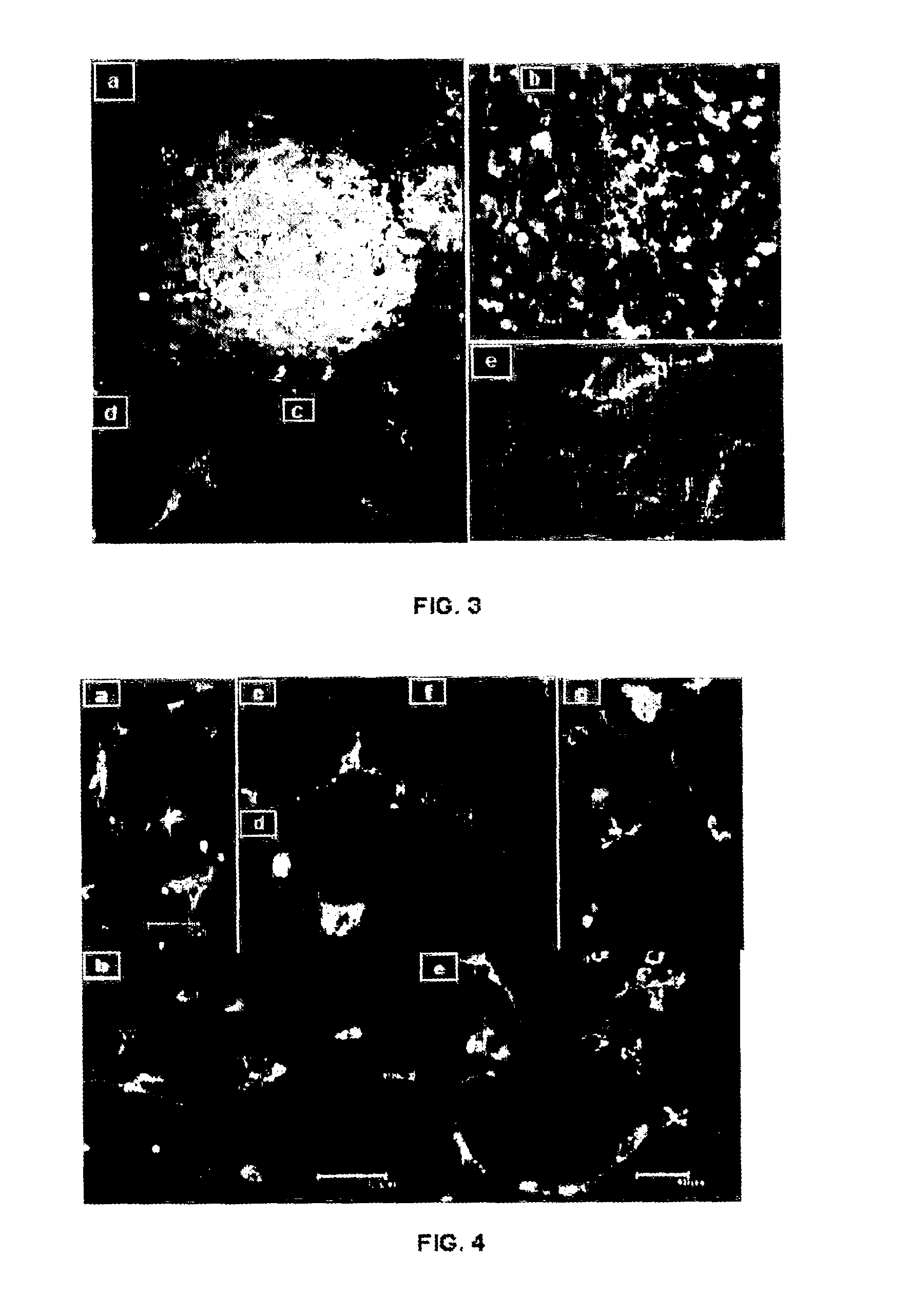Monoclonal antibodies that recognize neurospheres or neural progenitor cells
a neurosphere and antibody technology, applied in the direction of peptides, drug compositions, injected cells, etc., can solve the problems of ethical problems, immunological compatibility problems, and the inability to use, and achieve the effect of preventing the spread of neurospheres or neural progenitor cells
- Summary
- Abstract
- Description
- Claims
- Application Information
AI Technical Summary
Benefits of technology
Problems solved by technology
Method used
Image
Examples
example 1
Generation of the Monoclonal Antibodies NILO1 and NILO2
[0106]The inventors present a method for obtaining monoclonal antibodies to neural stem cells, which has the use of neurospheres derived from 13.5 day embryonic cells, as a source of antigenic stimulus and the use of Armenian hamsters of less than three months old, as the receptor of the immunizations, via a specific pattern. Obtaining the spleen and its fusion with mouse myeloma cells allows, after the selection in specific selective media of inter-species hybridomas that secrete monoclonal antibodies of hamster origin and with specificity against neural stem cells, both of embryonic origin and neural stem cells from adult animals.
Antigen Used for the Immunization
[0107]Neural stem cells (NSC) derived from neurospheres were used. The cells that grow as neurospheres may disaggregate and be cloned in cultures being capable of forming new neurospheres. The cells that form part of the neurospheres are considered neural progenitor ce...
example 2
Identification of Neurosphere Cells with the NILO Monoclonal Antibodies
[0116]NILO1 and NILO2 are hamster immunoglobulins IgG produced by hybridomas between hamster B lymphocytes and the non-producing myeloma P3-P3-X63.Ag8.653.653 derived from the Balb / c mouse. Despite being an inter-species fusion (hamster×mouse) the stability of the hybridoma is sufficiently high to guarantee its selection and cloning. The monoclonal antibodies produced by the NILO1 and NILO2 hybridomas, may be purified by means of sepharose columns bound to a G-protein or an A-protein, which guarantees their purity and allows their direct marking with different dyes (fluorescein, phycoerythrin, etc). There are currently NILO antibodies marked with FITC and with PE.
[0117]The NILO1 and NILO2 antibodies have enormous selectivity for neural stem cells, as shown by the immunocytochemistry, immunohistochemistry and functional studies presented in this specification.
[0118]On the other hand, the bonding of these antibodie...
example 3
NILO Markers in the SVZ Region of the Brain
[0122]NILO antibodies are specific for neural stem cells, as demonstrated by their exclusive presence in neurogenic regions of adult mice brains. Principally, cells positive for NILO have been detected in the SVZ region of adult mice and in the dentate gyrus of the hippocampus.
[0123]To demonstrate that the NILO1 and NILO2 cells correspond with neural progenitor cells, we perform an immunohistochemistry study making double markings with doublecortin (DCX), nestin (Nes), GFAP, Vimentin, βIII-tubulin, PSA-NCAM and Ki67, all markers associated with different points in the development of neural cells from neural precursor cells and as figures in the attached Table 1. The histochemistry sections are performed by means of cryostat in semi-thick sections (30 microns), with the aim of analyzing the sections in detail.
[0124]The data demonstrate that NILO1 (FIG. 5) and NILO2 (FIG. 6) are selective markers of neural progenitor populations identifying p...
PUM
| Property | Measurement | Unit |
|---|---|---|
| immunological compatibility | aaaaa | aaaaa |
| Fluorescence- | aaaaa | aaaaa |
| microscopy | aaaaa | aaaaa |
Abstract
Description
Claims
Application Information
 Login to View More
Login to View More - R&D
- Intellectual Property
- Life Sciences
- Materials
- Tech Scout
- Unparalleled Data Quality
- Higher Quality Content
- 60% Fewer Hallucinations
Browse by: Latest US Patents, China's latest patents, Technical Efficacy Thesaurus, Application Domain, Technology Topic, Popular Technical Reports.
© 2025 PatSnap. All rights reserved.Legal|Privacy policy|Modern Slavery Act Transparency Statement|Sitemap|About US| Contact US: help@patsnap.com



